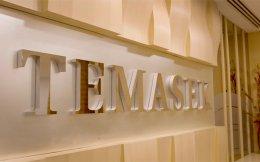The COVID-19 pandemic has had a significant impact on the investment climate globally and is likely to have a long-lasting effect on mergers and acquisitions (M&A).
Although Facebook’s proposed investment in Reliance Jio Platforms is a positive development in these uncertain times, M&A deals are increasingly being deferred or abandoned. This is because buyers are on the fence and would like to assess the pandemic’s impact on the target businesses before closing the transactions.
Similarly, sellers have been focused on tackling the pandemic’s impact on their supply chain, managing their workforce and other aspects of their operations.
There are also logistical issues due to the current lockdown in completing due diligence on target businesses to the complete satisfaction of the buyers. The assumptions made at the time of valuation of the target business cannot be fully validated by the buyer. This adds to the uncertainty in arriving at the purchase price.
In this scenario, to ensure that the buyers and sellers get comfortable in pursuing M&A opportunities, necessary contractual protections must be built in the transaction documents to safeguard their interests.
Here’s how purchase price adjustments and earn-out structures can mitigate the above-mentioned risk and act as a catalyst for dealmaking between a sceptical buyer and an optimistic seller in the Indian context.
Purchase price adjustments
The adjustments to the agreed purchase price reflect changes in net working capital, net assets or net debt of the target business compared with the estimated amounts agreed earlier between the buyer and the seller.
Since the pandemic is likely to have a significant impact on working capital, cash and debt of target businesses, the buyers will avoid concluding deals on the basis of a locked-box mechanism where the purchase price is fixed upfront based on historical accounts.
The buyers would like to retain the right to claw back the purchase price on the basis of the impact of COVID-19 on working capital, assets or debt of the target business reflected in the accounts drawn up after the closing date.
To avoid potential disputes between the buyer and the seller, the transaction documents must include watertight contractual provisions governing the purchase price adjustment mechanism. This must clearly set out the accounting policies to be used, as also the process and timelines for drawing up of accounts.
Another aspect which will assume significance is how financial and accounting experts make adequate provisioning in the accounts of the target businesses for the pandemic’s potential impact on issues such as an increase in doubtful trade debtors and losses caused due to disruption in supply chain.
Earn-outs
It is not possible for a buyer to predict with certainty the impact of COVID-19 on the prospects or performance of the target businesses. An earn-out structure can help the buyer and seller to take into account not only the current valuation of the target business but also a potential increase contingent on achieving pre-defined milestones.
The earn-out structure helps the buyer mitigate the risk of overvaluing the target business. We expect earn-outs to gain popularity as it is a great tool for the buyers to make payments on the basis of actual performance achieved by the seller.
This structure also provides a reward to the sellers for performance. It serves as a tool for sellers to break the logjam on negotiating valuation and move ahead with the transaction with an opportunity to earn a higher purchase price on fulfilment of pre-agreed milestones.
To avoid any disputes, the transaction document should clearly set out the financial and operational metrics for measuring the performance and the mechanism for calculation of the earn-out payments.
Moreover, given the uncertainty of the current situation, it is important for buyers and sellers to set realistic goals for revenue or profit generation and the expected timeframe to achieve these goals.
Regulatory hurdles
India’s foreign-exchange regulations have been liberalised to allow the buyer to structure payment of the purchase price in cross-border M&A transactions. A foreign buyer is permitted to defer up to 25% of the total consideration for up to 18 months from the date of signing of the definitive agreement. Typically, the purchase price adjustment or earn-outs are structured as holdbacks or through an escrow mechanism.
The earn-out period available for the parties is not adequate to measure the near-term performance of the target business and suitably reward the sellers. Also, the buyer must ensure that the upfront amount and the total consideration comply with the pricing guidelines under the foreign exchange regulations.
These restrictions often hamstring the buyer’s ability to freely adjust the purchase price and the payment timeframe.
It is trickier to defer the purchase price in case of public companies, since the Securities Contracts (Regulation) Act 1956 requires that consideration for transfer of shares should be paid simultaneously or within one day of transfer.
Still, there are structuring options available to navigate these regulatory issues and achieve the desired commercial objectives.
Growing significance
The clauses in M&A documents related to price adjustment and the earn-out mechanism have assumed significance more than ever in these uncertain times. These provisions can help in providing a safety net to the buyer as well as the seller and to also equitably allocate risk amongst themselves.
Legal, tax and accounting experts need to meticulously draft these provisions to precisely reflect the commercial understanding between the parties in order to minimise the scope of future disputes.
The buyers should also pay a lot more attention to other contractual provisions in M&A documents which help in risk allocation between the parties. These include pre-closing covenants, indemnities, material adverse effect clauses, representations and warranties to adequately protect their risk.
Sellers, too, must negotiate adequate protections such as the right to review and dispute the post-closing accounts. They should seek contractual rights to gain autonomy to run the target business to ensure there is no impediment in achieving the milestones and potentially receive a higher purchase price in an earn-out structure.







